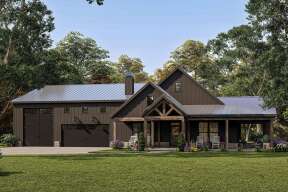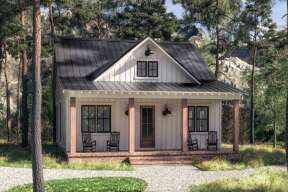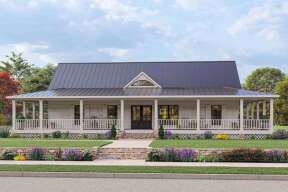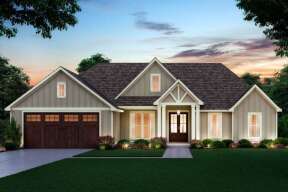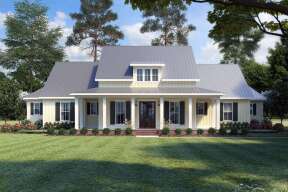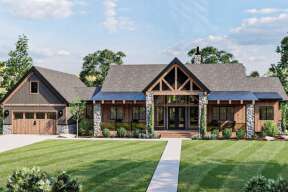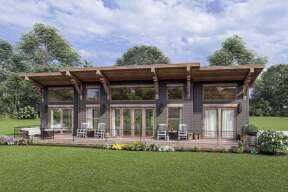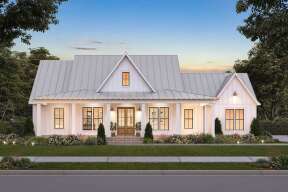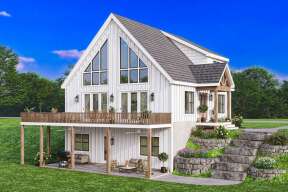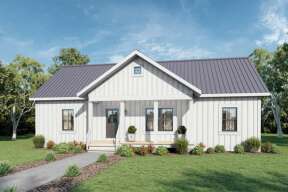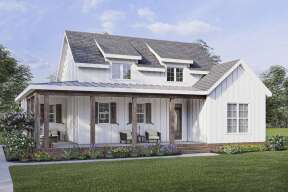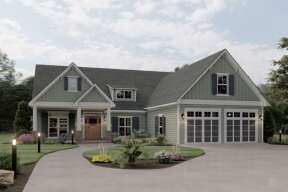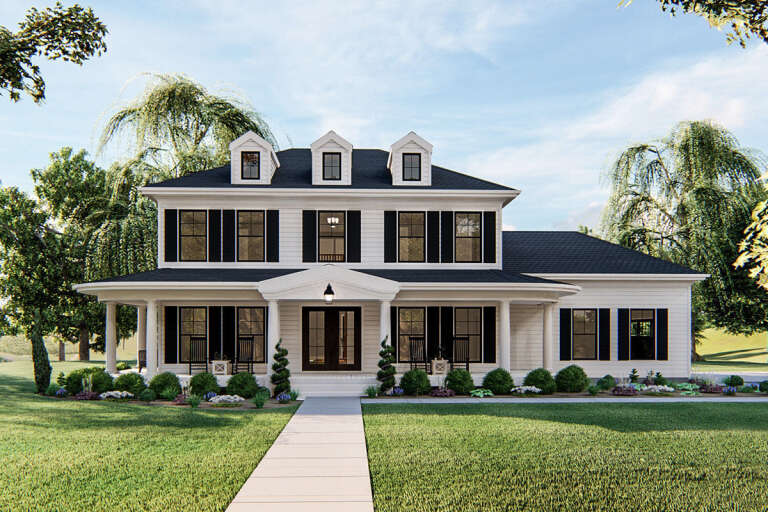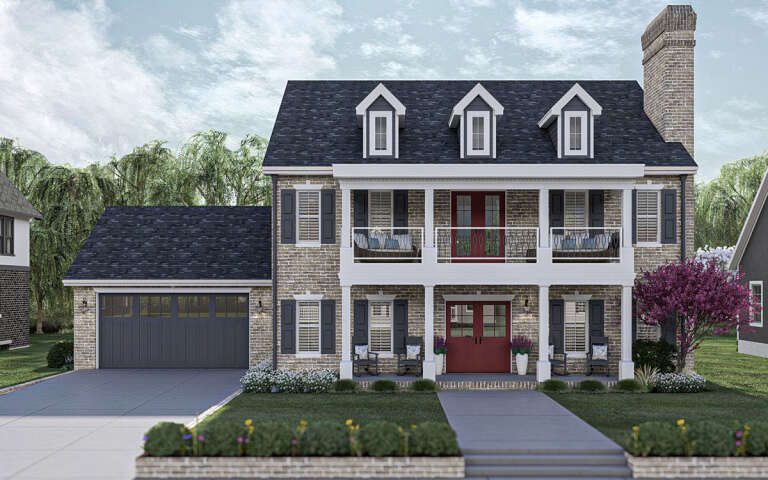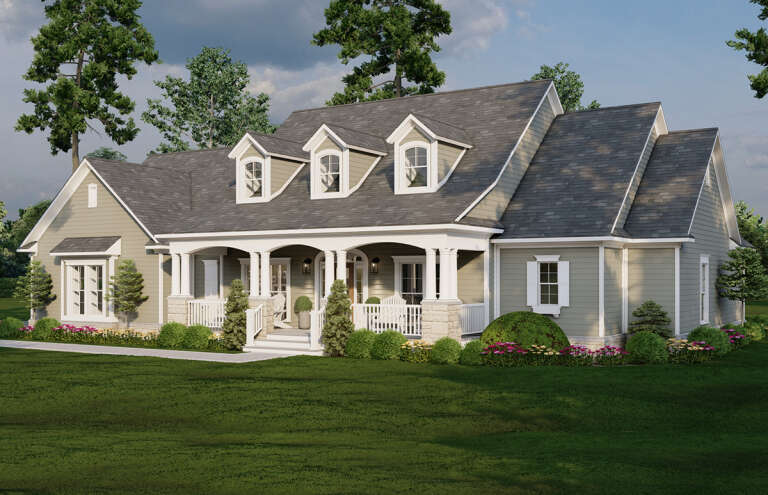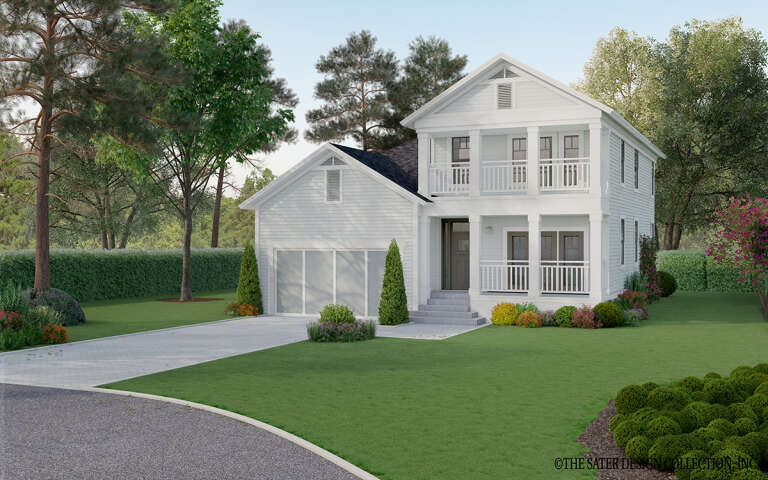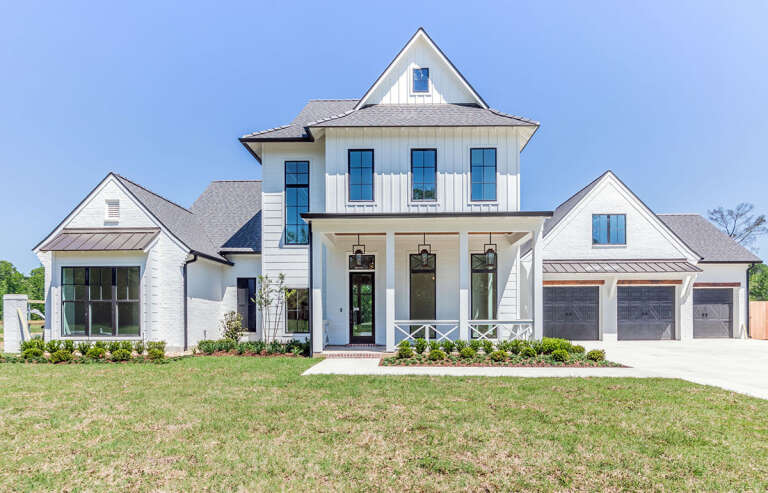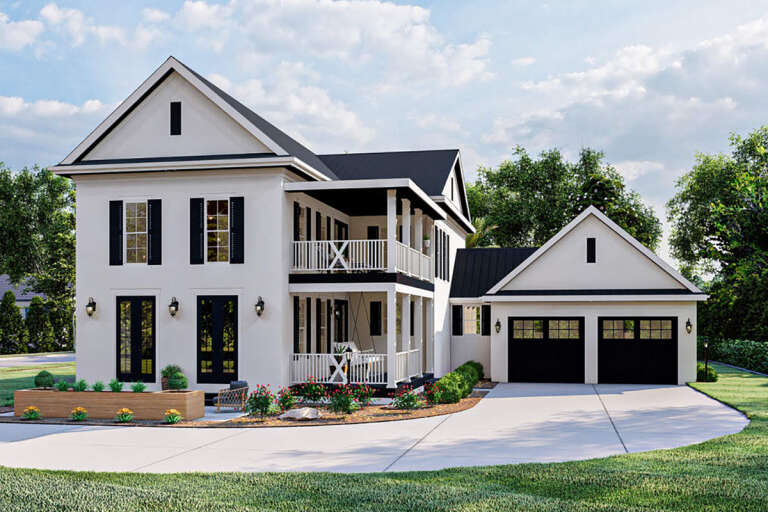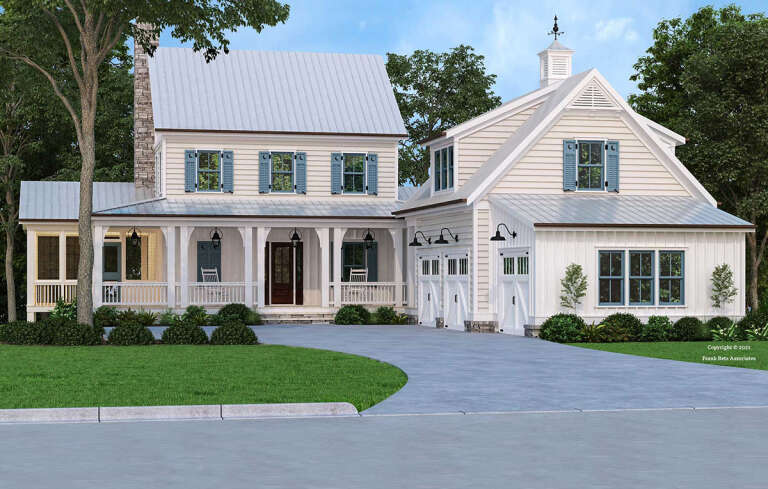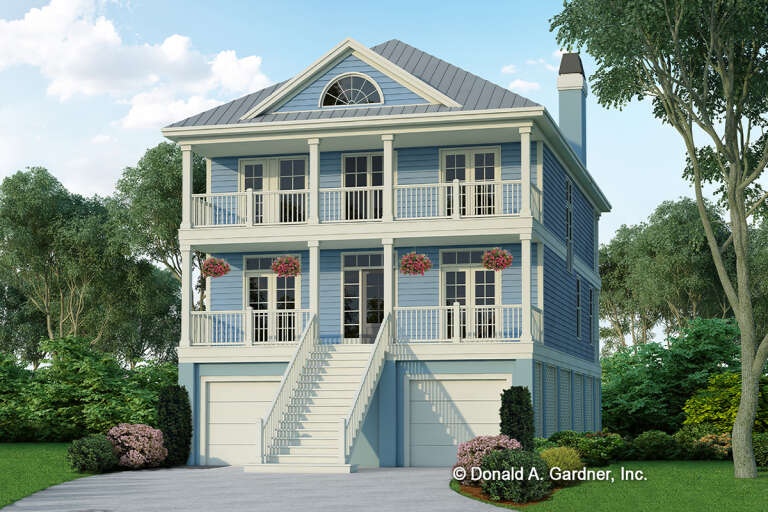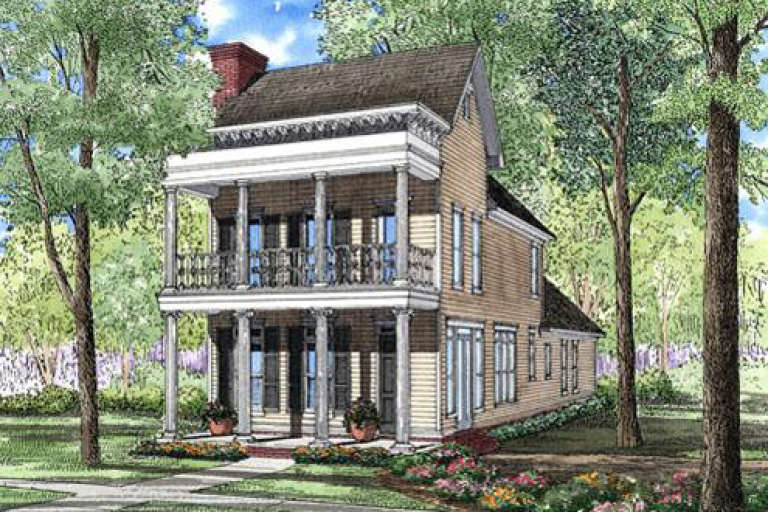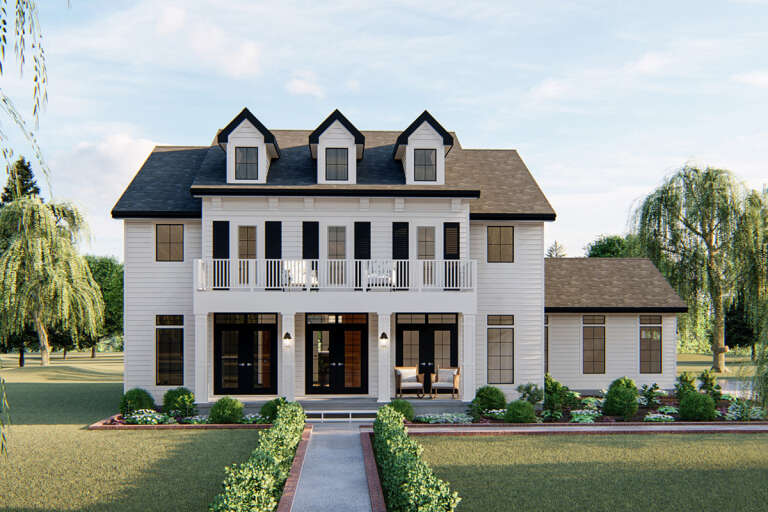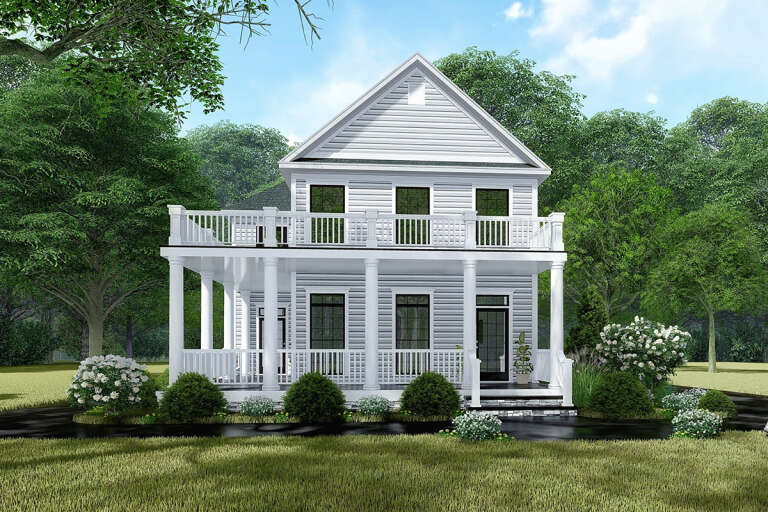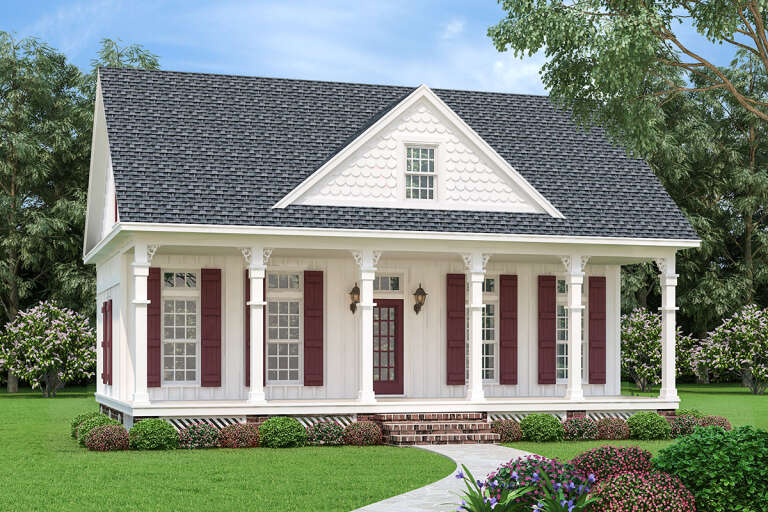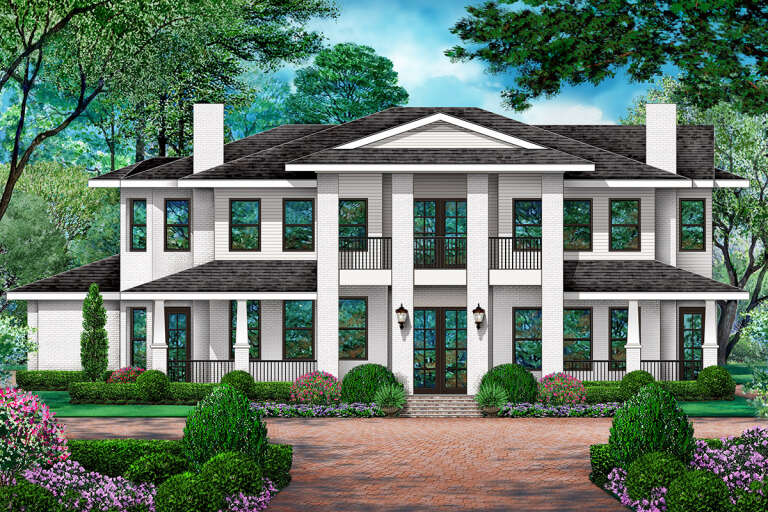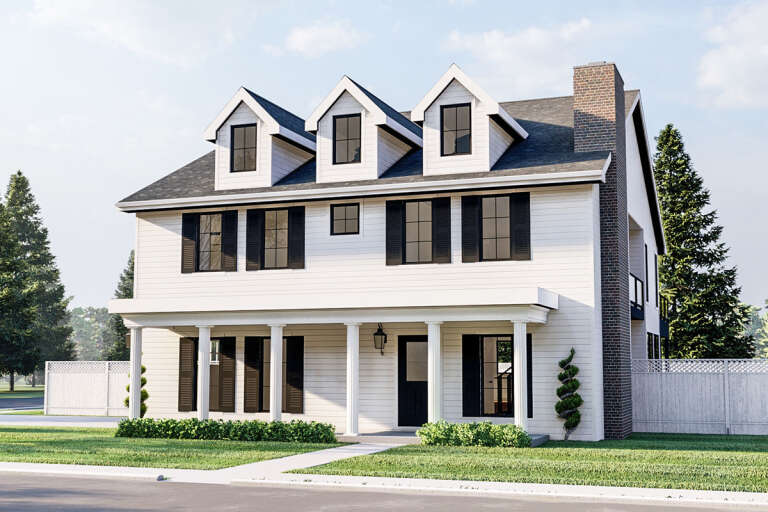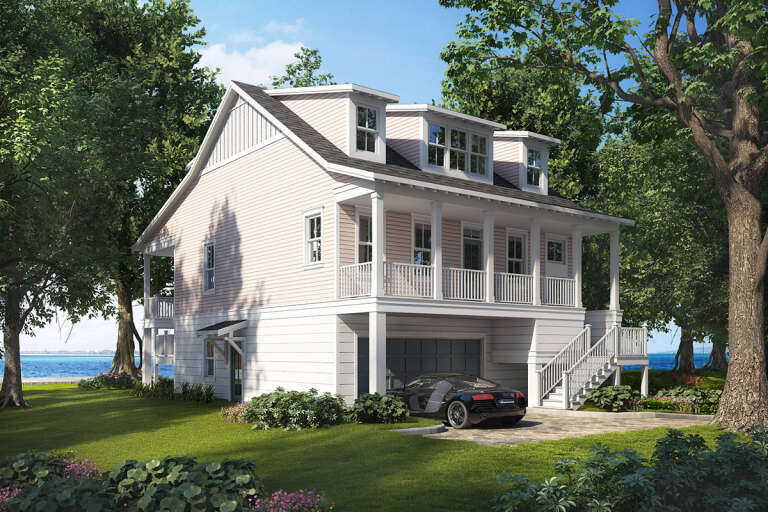48 Results
SORT BY
Charleston FAQ
What are Charleston-style homes called?
Charleston-style homes are often called "Charleston single houses" or simply "single houses." These distinctive homes originated in Charleston, South Carolina, and are integral to the city's architectural heritage. Charleston single-house plans are known for their unique layout, narrow footprint, and adaptability to the local climate.
The defining characteristic of a Charleston single house is its long, narrow design, with the narrow side of the house facing the street. This orientation allows for better air circulation and natural cooling, as the prevailing coastal breezes can flow through the house. The main entrance is typically located on the side of the house, accessed via a covered porch or piazza. These porches often extend the entire length of the house, providing ample outdoor living space and shade from the hot southern sun.
Charleston-style house plans are usually two or three stories high, with a gable-end roof and a central hall plan. While the exterior architectural styles range from Greek Revival to Victorian, the interior layouts are all relatively the same and consist of two or three rooms per floor, aligned one behind the other.
Why do Charleston-style houses have porches on the side?
Charleston-style houses feature porches on the side primarily for climatic and functional reasons. These side porches, known as piazzas, are an essential design element contributing to these homes' unique character and practicality. There are several reasons for the presence of side porches in Charleston-style houses:
- Climate adaptation. Charleston has a hot and humid climate, and the side porches are strategically designed to make the most of the prevailing coastal breezes. Positioning the patio along the side of the house allows for better air circulation and natural ventilation, helping to cool the interior spaces more efficiently.
- Outdoor living space. The side piazzas provide ample shaded outdoor living space, particularly valuable in the hot southern climate. Residents can use these spaces for relaxation, dining, and socializing, extending their living areas to the outdoors while enjoying protection from the sun.
- Privacy. By placing the porch on the side of the house, Charleston house plans offer more privacy to their occupants. Since the main entrance is typically located on the side, accessed via the piazza, this layout separates the public street-facing facade from the private living spaces, allowing residents to enjoy their outdoor areas without directly viewing passersby.
- Space efficiency. Charleston-style house plans are designed with a narrow footprint, efficiently using limited urban lots. The side porches enhance the overall living space and contribute to these homes' distinctive long, narrow layout, maximizing available land usage.
Why are Charleston porches slanted?
Charleston porches are often slanted or sloped for practical reasons related to water drainage and preservation. In the hot and humid climate of Charleston, rain is a common occurrence, and the slant of the porch serves a crucial purpose in maintaining the longevity and structural integrity of the house.
Why are Charleston houses built sideways?
Charleston houses are constructed with a sideways orientation that positions the narrow side of the house facing the street. This distinctive design approach serves various practical and climatic purposes and has become a defining characteristic of Charleston's architectural heritage. The primary reasons for the sideways orientation of Charleston-style house plans include climate adaptation, space efficiency, privacy, and fire safety.
Adaptation to Charleston's hot and humid climate plays a significant role in this design. Positioning the narrow side of the house facing the street exposes the long sides of the house to the prevailing coastal breezes. This orientation enables better airflow and cooling throughout the home, making it more comfortable.
Space efficiency is another key factor driving this design choice. The long, narrow layout allows for the construction of more homes on smaller parcels of land while providing adequate living space for occupants.
Additionally, the sideways orientation of Charleston single-house plans enhances privacy for the residents. By situating the main entrance on the side of the house, accessed via the side porch or piazza, the private living spaces are separated from the public street-facing facade. This layout allows residents to enjoy their outdoor areas without being in direct view of passersby, contributing to these homes' unique character and practicality.
Finally, in the past, Charleston experienced several devastating fires, and the narrow side orientation of the houses provided some degree of fire protection. In addition, the reduced street-facing facade minimized the risk of fire spreading from one place to another, as the smaller surface area created more space between adjacent homes, acting as a natural firebreak.
What are Charleston houses made of?
Charleston houses, particularly the historical ones, are constructed using materials that reflect the region's architectural traditions, local resources, and environmental factors. The selection of materials has evolved, but some of the most common materials used in the construction of Charleston house plans include
- Wood. The most prevalent building material in Charleston single house plans, particularly for the frame and exterior siding. The region's abundant timber resources made wood readily available and cost-effective.
- Brick. This material has been used extensively in the construction of Charleston homes, particularly for foundations, chimneys, and exterior walls. Bricks were locally produced from the abundant clay deposits in the area, and their use provided enhanced structural stability, durability, and fire resistance.
- Tabby. This unique material, native to the coastal regions of the southeastern United States, including Charleston, is a type of concrete made from a mixture of oyster shells, lime, sand, and water. In some older homes, Tabby was used primarily for foundations, walls, and other structural elements, particularly during the 18th and early 19th centuries.
Why do Charleston houses have two front doors?
Charleston houses often feature what appears to be two front doors due to their unique layout and design. However, contrary to initial impressions, the second "door" is a doorway leading to the side porch, a key architectural feature of these homes.
The other door that leads to the piazza enhances privacy for the residents by separating the public-facing facade from the private living spaces. This layout allows occupants to enter and exit their homes without being directly visible to people passing on the street. Moreover, the main entrance to the living area is typically accessed from the piazza, ensuring privacy for the residents.
Functionality is also a driving factor behind the design since the side porch serves as a virtual outdoor living space in Charleston's hot and humid climate. By connecting the porch to the street through a separate door, residents can easily access their outdoor living spaces for relaxation, dining, or socializing without passing through the house's interior.
Finally, Charleston-style home plans are designed to maximize natural ventilation and airflow. By providing access to the porch from the street, residents can open both the exterior and interior doors to create a cross breeze that cools the living spaces more effectively.
Do Charleston houses have basements?
Charleston houses generally do not have basements. This absence is primarily due to environmental, geographical, and historical factors that make the construction of basements in the region impractical or infeasible.
One of the main reasons for this is the high water table in Charleston. The city's low-lying terrain and proximity to the ocean result in a high water table, making it susceptible to flooding, especially during heavy rainfalls and storm surges. Constructing basements in such conditions poses a significant risk of flooding and water damage, rendering it an undesirable and impractical option.
Additionally, the soil in Charleston and the surrounding Lowcountry consists primarily of clay and sandy loam, which can be unstable and prone to shifting. These soil conditions make the construction of basements more challenging and costly, as additional reinforcement and waterproofing measures would be necessary to ensure the home's structural integrity.


